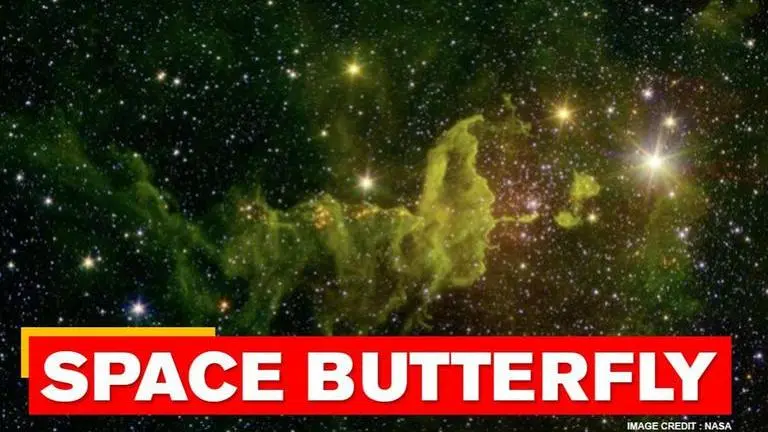Updated 2 August 2020 at 16:54 IST
ESO’s Very Large Telescope captures rare 'space butterfly'; Pic inside
ESO image depicts bubble known as NGC 2899 located between 3000 and 6500 light-years away in Southern constellation of Vela that resembles butterfly.
- Science News
- 2 min read

An image of a space gas bubble taken by the European Southern Observatory’s (ESO) Very Large Telescope that resembles the butterfly has intrigued the internet. Shared by the European Southern Observatory on Twitter, the image depicts a bubble known as NGC 2899 located between 3000 and 6500 light-years away in the Southern constellation of Vela (The Sails ) that looks like a butterfly with its symmetrical structure, beautiful colours, and intricate patterns.
Astronomers were able to capture the highly detailed image of NGC 2899 using the FORS instrument installed on UT1 (Antu), one of the four 8.2-meter telescopes that make up ESO’s VLT in Chile. The image was taken as a part of the ESO Cosmic Gems program, an initiative to capture unique space phenomenon and visually attractive celestial objects using ESO telescopes for research purposes. The vibrant butterfly bubble seems to extend two light-years from its center and glows sharply among the stars of the Milky Way galaxy. Further, its temperature can reach up to ten thousand degrees.
Resembling a butterfly with its symmetrical structure, beautiful colours, and intricate patterns, this striking bubble of gas, NGC 2899, appears to float and flutter across the sky in this new picture from our VLT.
— ESO (@ESO) July 30, 2020
Credit: @ESOhttps://t.co/IseDOa6YRe pic.twitter.com/gPpSBa2N9y
Advertisement
According to a report by the Stephen Memorial Observatory, Hiram College, Ohio, the high temperature in the bubble are due to the “large amount of radiation from the nebula’s parent star, which causes the hydrogen gas in the nebula to glow in a reddish halo around the oxygen gas, in blue.” The object has two central stars, which are responsible for its symmetric appearance. The structure has stunned the astronomers as only 10–20 percent of planetary nebulae display this type of bipolar shape as the Butterfly bubble.
ESO’s high-resolution instrument
While ESO’s high-resolution instrument was one of the first to be installed on ESO’s VLT and is behind numerous beautiful images, this particular image has been recorded using Focal Reducer and low dispersion Spectrograph by the scientists. “FORS has contributed to observations of light from a gravitational wave source, has researched the first known interstellar asteroid, and has been used to study in-depth the physics behind the formation of complex planetary nebulae,” ESO revealed in its blog post.
Advertisement
Published By : Zaini Majeed
Published On: 2 August 2020 at 16:54 IST
